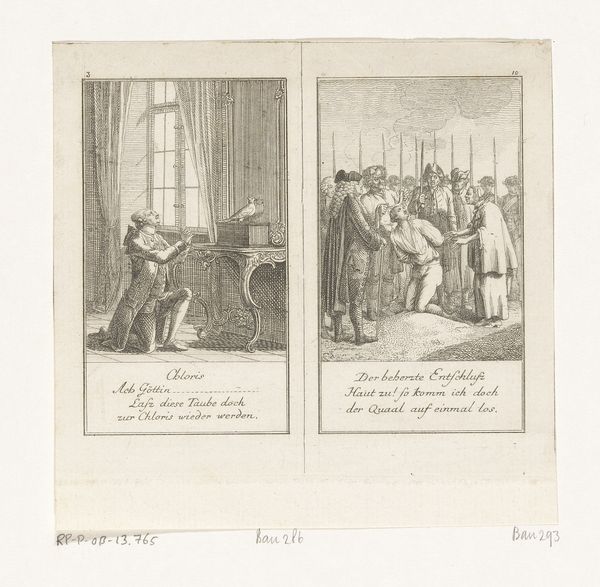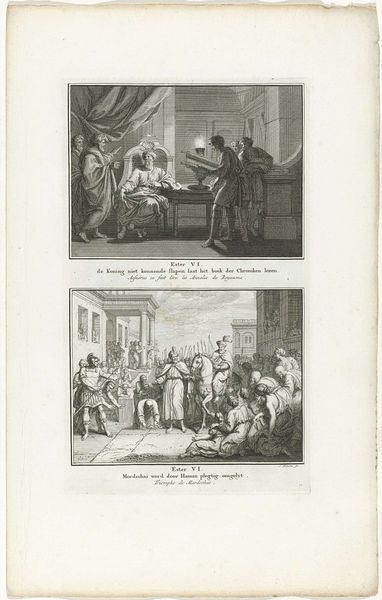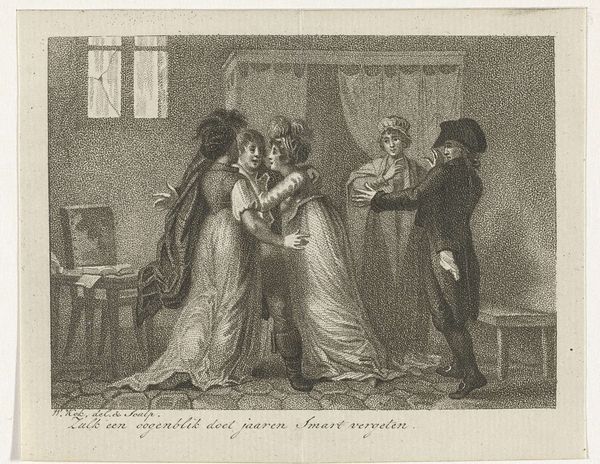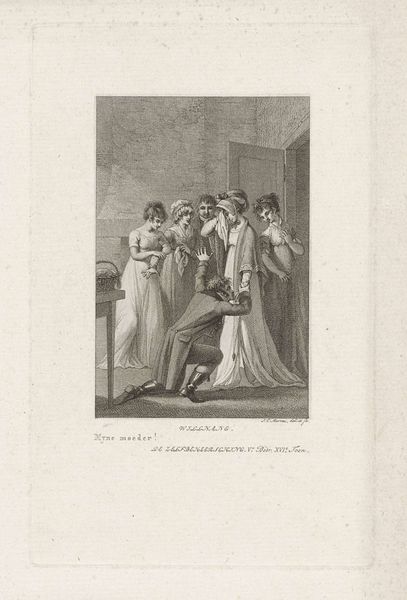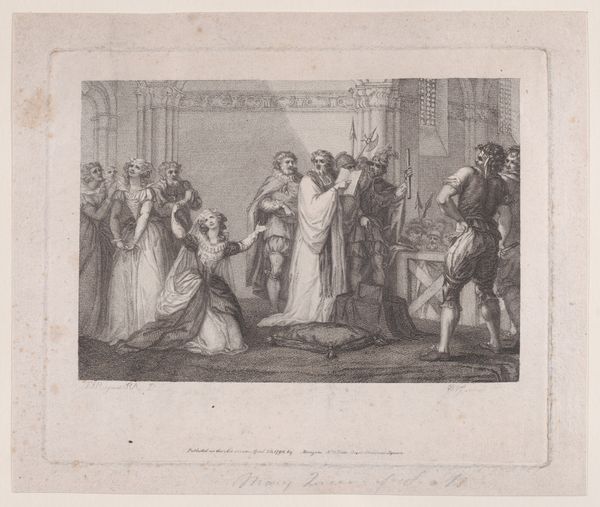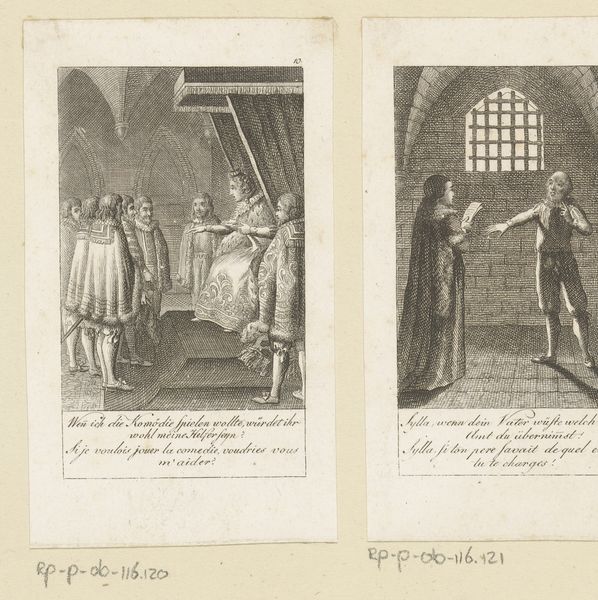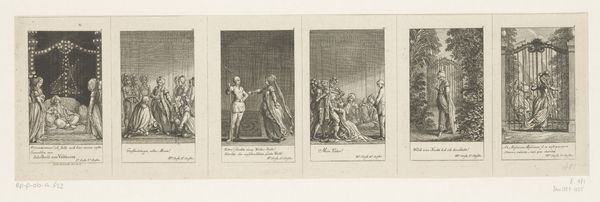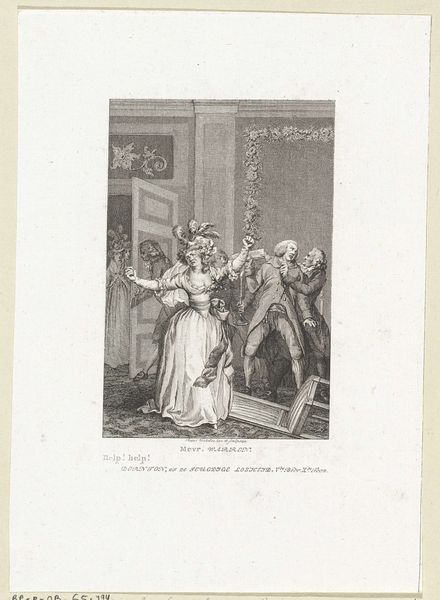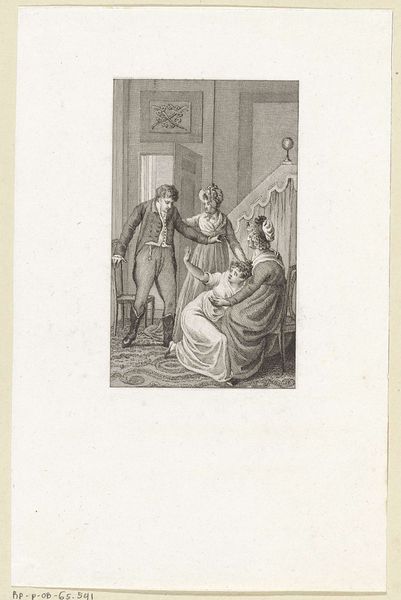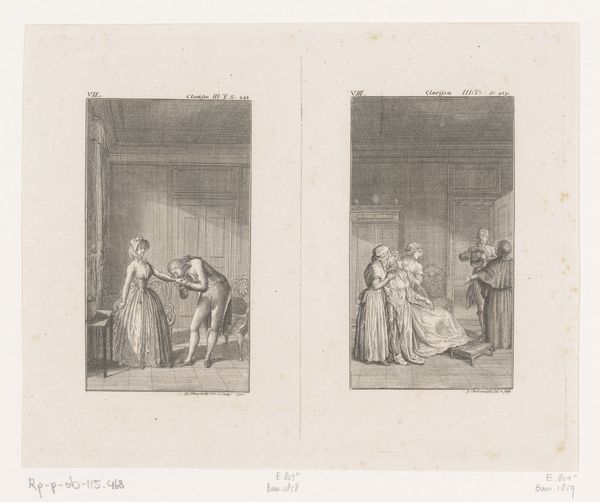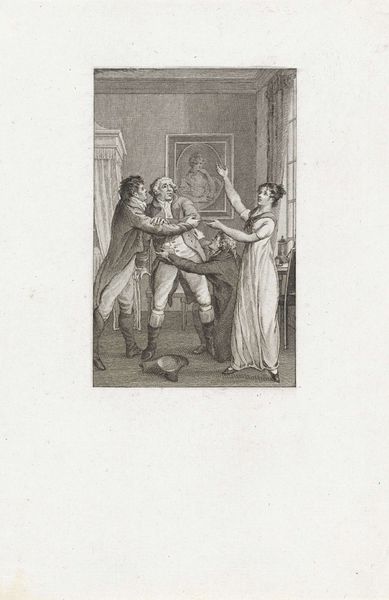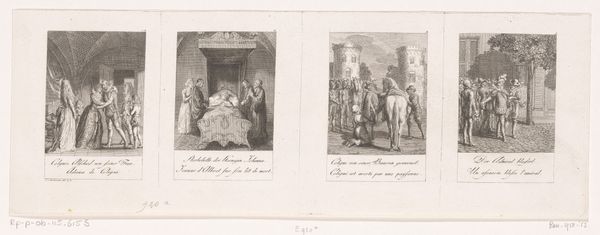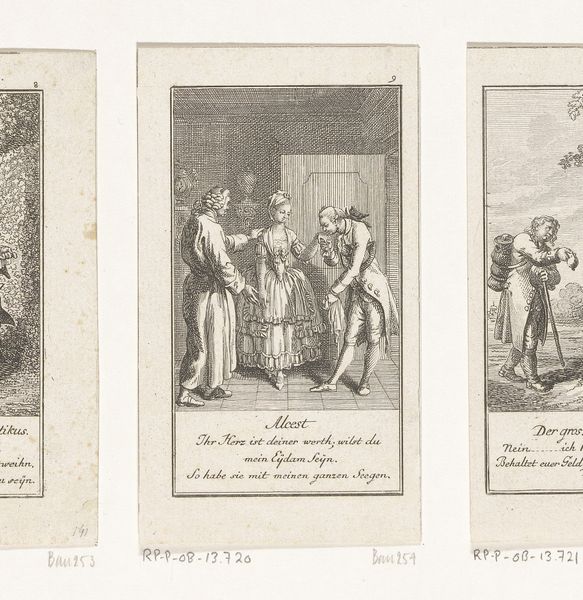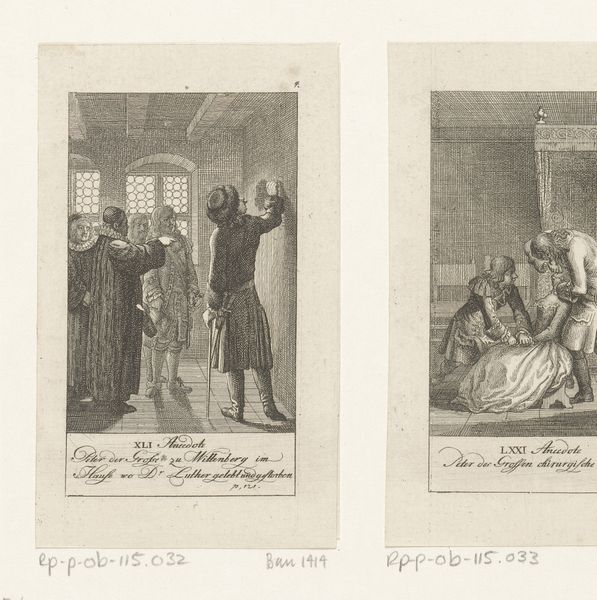
print, etching
#
narrative-art
#
dutch-golden-age
# print
#
etching
#
classicism
#
romanticism
#
genre-painting
#
history-painting
Dimensions: height 145 mm, width 187 mm
Copyright: Rijks Museum: Open Domain
Curator: Here we have a print, “Blad met twee scènes uit 'De Kluizenaar'” created sometime between 1787 and 1828 by Ludwig Gottlieb Portman. It’s currently held here at the Rijksmuseum. Editor: My first impression is one of high drama. There's a definite sense of theatricality; each vignette feels staged, frozen in a moment of heightened emotion. I also can't help noticing the stark contrast between the crisp lines and the delicate shading—it gives a tangible feel to the image, like fine cloth. Curator: The artist really excels in his control of light and shadow, doesn’t he? Observe how the etched lines define not just form but also texture, creating depth. It adheres to Classical structure but flirts with Romantic emotionalism, using visual syntax to advance a clear narrative, like in a play. Editor: Yes, and knowing it’s an etching helps understand that depth. The labour involved in preparing the metal plate, the precision needed to create those fine lines—the manual aspect influences the very feel of the piece, imbuing it with a crafted quality so very distinct from the more industrial means we see later on. Were these prints widely distributed? To what social strata would they have appealed? Curator: The print, in its multiple small scenes, acts as a stage, a place to explore personal and societal relationships with defined borders. Notice the expressions, their dramatic hand gestures—it borrows heavily from performative visual traditions that had strong resonance at that time. Editor: And that paper stock – do we know if a particular grade or supplier was favoured? It all contributes to understanding not only the image, but its accessibility as an object for a wider audience during a transformative time for both artistic techniques and consumer culture. It reminds me of discussions around theatre productions in relation to different layers of labour and artistic intention, all of that going into how and for whom such works were realized. Curator: It’s an interesting tension—between artistic innovation and accessibility. Thanks to techniques like this etching method Portman created artwork of that moment while reaching larger social strata in Dutch society. Editor: Exactly! The means of production shape not just the object but its social life. Understanding this piece in the context of printmaking and social outreach reframes it, gives another perspective, quite exciting, really.
Comments
No comments
Be the first to comment and join the conversation on the ultimate creative platform.
